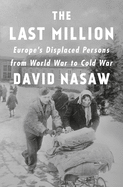
The Last Million: Europe's Displaced Persons from World War to Cold War sheds light on what to many readers will be an unfamiliar legacy of the Second World War. David Nasaw, author of sweeping biographies such as Andrew Carnegie, provides a characteristically thorough and impressively researched account of the roughly one million displaced persons (DPs) who found themselves stranded in Germany at the end of the war. After millions of forced laborers and POWs were repatriated, the Allied nations overseeing war-ravaged Germany were left with the problem of those who refused repatriation or had no home to return to. These Last Million included concentration camp survivors, Eastern Europeans whose lands had been occupied or annexed by the Soviet Union, Nazi collaborators and outright war criminals. As the allied countries decided what to do with these displaced persons, they were housed in what were meant to be temporary camps that over years transformed into something like island communities.
The Last Million showcases Nasaw's deft handling of complexity--not only the number of global controversies that affected the displaced persons, but the morally complex matters of collaboration. Many DPs had served in SS units and participated in the murder of Jews, but some had been drafted into military units under threat or performed innocuous administrative tasks. Sadly, Nasaw's account is one where moral questions were often coopted by political convenience, with nations such as the United States eventually letting in hundreds of war criminals. The Last Million is a detailed account of new beginnings, sometimes for people who didn't deserve them. --Hank Stephenson, manuscript reader, the Sun magazine

